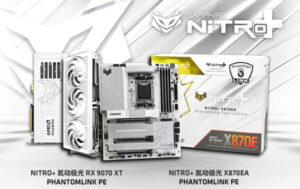
Researchers from the New Jersey Institute of Technology (NJIT) have made a groundbreaking discovery in the field of energy storage. By leveraging artificial intelligence, they have identified five new materials that could potentially replace lithium-ion batteries, a staple in modern technology that faces significant supply and sustainability challenges. The findings, published in Cell Reports Physical Science, highlight a promising future for multivalent-ion batteries, which utilize more abundant elements such as magnesium, calcium, aluminum, and zinc.
The announcement comes as the demand for sustainable energy solutions grows worldwide. Lithium-ion batteries, while prevalent, are increasingly scrutinized due to their reliance on scarce resources and environmental impact. The NJIT team’s use of generative AI to discover novel porous materials capable of supporting multivalent-ion batteries could represent a significant shift in energy storage technology.
AI-Driven Discovery: A New Frontier
Unlike traditional lithium-ion batteries, which depend on ions carrying a single positive charge, multivalent-ion batteries use elements with ions that carry two or even three positive charges. This characteristic potentially allows these batteries to store much more energy, making them highly attractive for future applications. However, the larger size and higher charge of multivalent ions present challenges in accommodating them efficiently in battery materials.
According to Professor Dibakar Datta, who led the NJIT team, the primary obstacle was not the lack of promising battery chemistries but the difficulty in testing millions of potential material combinations. “We turned to generative AI as a fast, systematic way to sift through that vast landscape and spot the few structures that could truly make multivalent batteries practical,” Datta explained.
“This approach allows us to quickly explore thousands of potential candidates, dramatically speeding up the search for more efficient and sustainable alternatives to lithium-ion technology,” said Datta.
Innovative AI Techniques: CDVAE and LLM
To tackle the challenges, the NJIT team developed a novel dual-AI approach: the Crystal Diffusion Variational Autoencoder (CDVAE) and a finely tuned Large Language Model (LLM). These AI tools enabled the rapid exploration of thousands of new crystal structures, a task previously deemed impossible with traditional laboratory experiments.
The CDVAE model, trained on extensive datasets of known crystal structures, was capable of proposing entirely new materials with diverse structural possibilities. Simultaneously, the LLM was optimized to identify materials closest to thermodynamic stability, a crucial factor for practical synthesis.
“Our AI tools dramatically accelerated the discovery process, which uncovered five entirely new porous transition metal oxide structures that show remarkable promise,” Datta noted. “These materials have large, open channels ideal for moving these bulky multivalent ions quickly and safely, a critical breakthrough for next-generation batteries.”
Validating Breakthroughs and Future Implications
The NJIT team validated their AI-generated structures using quantum mechanical simulations and stability tests, confirming the materials’ potential for real-world applications. This validation is a crucial step towards synthesizing and testing these materials experimentally.
Datta emphasized the broader implications of their AI-driven approach, stating, “This is more than just discovering new battery materials — it’s about establishing a rapid, scalable method to explore any advanced materials, from electronics to clean energy solutions, without extensive trial and error.”
Meanwhile, the research has opened new avenues for collaboration. Datta and his colleagues plan to partner with experimental labs to synthesize and test their AI-designed materials, pushing the boundaries further towards commercially viable multivalent-ion batteries.
Looking Ahead: The Future of Energy Storage
This development follows a growing trend in the scientific community to utilize AI in material discovery, a field traditionally reliant on labor-intensive experimentation. The potential to streamline the discovery process and reduce the time from concept to commercialization is a significant advantage.
As global demand for efficient and sustainable energy storage solutions continues to rise, the NJIT team’s findings could play a pivotal role in shaping the future of energy technology. The move represents a step towards more sustainable and abundant energy resources, with implications that extend beyond batteries to other advanced material applications.
With these promising results, the path forward involves further testing and development to ensure these new materials can be integrated into commercial products. The implications for industries ranging from consumer electronics to electric vehicles are substantial, potentially leading to more sustainable and efficient energy solutions worldwide.






